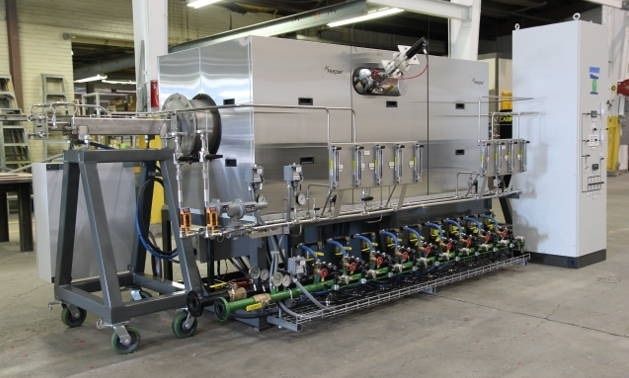Harper is the global leader for ultra-high temperature (UHT) continuous furnace systems rated to 3000°C to be used in the production of many powdered metals and high modulus carbon fiber, primarily used in applications requiring high rigidity.
Harper makes use of its years of experience and multiple proprietary features to implement systems that reliably perform for long periods at these high temperatures.
UHT furnaces have been developed in a variety of sizes from as small as 65mm width systems producing 10 tons to production rates of 400 tons per year and more. As with all the company’s designs, they are customizing state-of-the-art solutions unique to each customer’s processing needs.
Key Features
The main features of the UHT furnaces include:
-
It has a positive seal construction techniques resulting in greatly enhanced furnace life, and heating area composed of a well insulated chamber which minimizes the heat loss from the system.
-
The multifaceted approach to superior gas tight construction minimizes required heating chamber purge rates to increase furnace life.
-
Special attention is given to the UHT system in terms of design and inspection for gas tight construction.
-
An independent inspector studies the steel shell gas sealing welds for visual and dye penetrate testing, and once the system is assembled a pressure test is conducted prior to shipment to ensure gas tight construction.

Testimonial
Harper’s ultra-high temperature (UHT) graphite furnace system has been rock solid in its performance. With the potential challenges a system that operates at 2500°C can offer, Harper’s design has been dependable, consistent and reliable since 2006.
With minimal rebuild and operation at 2500°C, the system remarkably still has original heating elements and graphitic parts, which would normally degrade quickly at such high temperatures. The furnace is used for process development of multiple applications and it has proven versatile for this purpose.
Nicholas Gagliardi - Composite Research Engineer
University of Dayton Research Institute (UDRI)